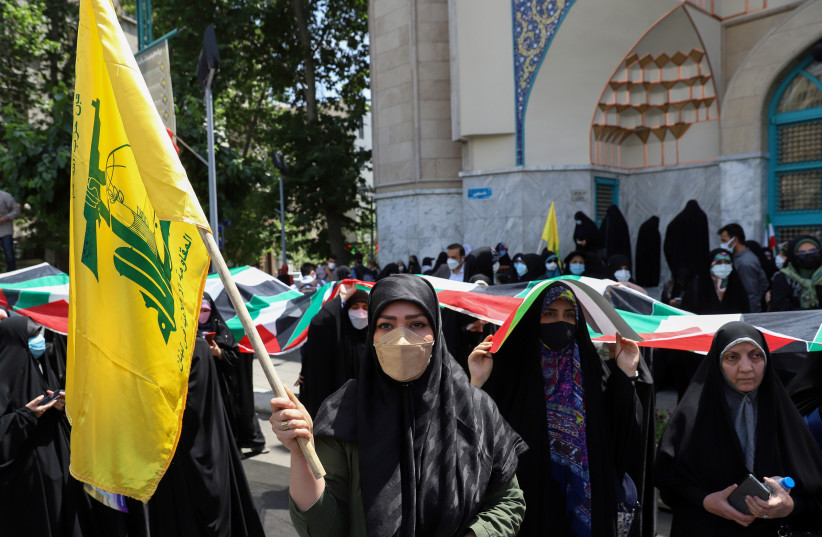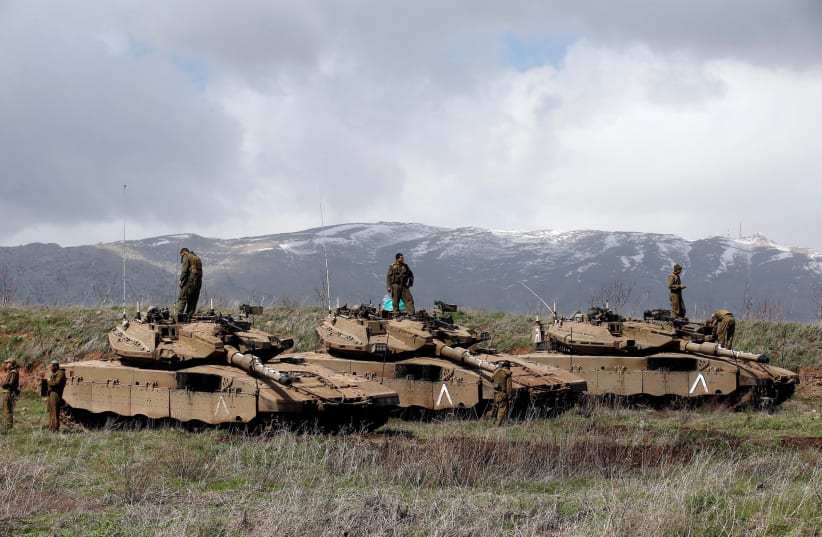Has everyone misunderstood Israel’s failures on October 7?
While some official probes are weeks away and others are months away, one of the most profound debates that is already ongoing within the highest levels of the defense establishment is when deterrence against Hamas failed, The Jerusalem Post understands.
Put differently, when did the “concepcia” or conceptual framework for understanding to what extent Israel could keep Hamas “contained” through a mix of limited use of force and economic incentives fail?
When did the idea fail (without Israel knowing it had failed) that Iron Dome and other defenses could allow Israel to swallow rounds of rocket attacks and to accept a post-victory era of deterring, but not defeating Hamas?
This is not just an academic question.
Israel and the IDF are still trying to decide whether some level of deterrence can work versus Hezbollah in Lebanon, against Iranian proxies in Syria, and against Iran in general.

Properly understanding what went wrong with Hamas and when things went wrong will likely reshape Israel’s post-October 7 world for the next decade at least.
After being massively wrong that Hamas would never stage a large-scale invasion and was deterred, conventional wisdom rapidly shifted to the idea that the entire Israeli political and defense establishment completely missed the ball on Hamas for a period of several years or more.
In other words, a new “concepcia” has replaced the old one, arguing that the old one was not only partially wrong, but useless for the future and wrong from the start.
The war’s earliest days
If in the early weeks and months of the war, most defense officials were too ashamed of the failure of the prior deterrence framework to try to defend any piece of it, the Post has learned that as time moves on, more top defense officials than before are arguing that the model might actually have worked for the majority or the vast majority of the time that it was being used, falling apart only at a much later date.
Before delving into who might be right about this and why, there is also some debate regarding when the idea of there being utility to keeping Hamas as a key or the dominant actor in Gaza originated.
While Hamas was founded in the 1980s, it did not truly arrive on the scene until the bus-bombings it pulled off in the mid-1990s.
Even then, Hamas was merely a roughshod terror group, not anything near the military power it eventually became in controlling all of Gaza with 15,000 rockets, large numbers of drones and anti-tank missiles, and a whole underground world of tunnels.
Some security officials feel Hamas in Gaza should have been thoroughly dismantled with a deep invasion during the Second Intifada – a kind of Operation Defensive Shield for Gaza (that operation rooted out much of Hamas and Fatah terror in the West Bank.)
But the clearer points at which Israel and the IDF decided to allow and keep Hamas in control of Gaza really started: when the terror group routed Fatah in a coup in 2007, when Israel chose not to eliminate the group during 2008-2009 Operation Cast Lead, and when a strategic framework was developed to treat Hamas with more respect in practical terms sometimes than the Palestinian Authority of the West Bank.
Some of the above decisions were made by Ariel Sharon, some by Ehud Olmert, but the main decider who allowed Hamas to stay in power from 2009-2023 (with an 18 month hiatus in 2021-2022) was current Prime Minister Benjamin Netanyahu.
This included Netanyahu’s plan to prop up Hamas economically, facilitating the transfer to the terror group of funds from Qatar once the PA cut Hamas off from its own funding.
On January 10, an alleged Hamas source leaked to Asharq Al-Awsat that its plans to invade Israel went back to at least to the end of the 2014 Gaza conflict.
In this narrative, different Hamas leaders plotted the invasion for nearly a decade, waiting for just the right moment.
If this narrative is true, then Israel and the IDF’s deterrence framework against Hamas was useless for over a decade.
Inconsistencies from Hamas?
Inconsistent moves, such as Hamas staying out of fighting Israel during several rounds of fighting with Islamic Jihad in Gaza in August 2022 and May 2023, among others, were elaborate long-term planning tricks by Hamas to lure Israel into a deeply-held complacency.
One area where those challenging the new anti-deterrence conventional wisdom are planting a flag and resisting the rejection of deterrence is the May 2021 conflict.
Sources point out that Hamas stayed out of many rounds of fighting between Israel and Islamic Jihad in 2019, and yet went to war with Israel in a big way in May 2021.
According to this argument, this proves at least one thing and may prove another.
It proves, say sources, that Hamas was deterred at least up until May 2021 and that it stayed out of the 2019 rounds with Islamic Jihad not as some kind of ruse, but because at those moments it was deterred, and that something simply changed in May 2021.
That something could be Israel’s attempt to assassinate Sinwar in May 2021, but a wide variety of factors could have come into play.

These officials then argue that it might prove that Hamas still was actually deterred in August 2022 and May 2023.
Essentially their argument goes that if Hamas was not faking being deterred in 2019, then the most likely explanation that they did not participate in war in August 2022 and May 2023 was not because of some complex trick to lure Israel into complacency, but because in fact the May 2021 conflict had restored deterrence.
In this narrative, deterrence was never a perfect solve-all problems idea, and there were times in 2008-9, 2012, 2014, and 2021 where it broke, and Israel had to restore it with larger rounds with Hamas.
But according to this narrative, deterrence did work most of the time at least up until May 2023.
In that case, deterrence only failed completely sometime between May 2023 and October 2023, not years or more than a decade before.
There is even support for this in the Asharq Al-Awsat report. The report stated that Hamas Chief Ismail Haniyeh did not even know about the mass invasion until hours before.
This could mean that there were deep splits even within Hamas about such an operation, and parts of it, including its global top official Haniyeh, were not fully in favor, while parts, like local Gaza Chief Yahya Sinwar, were ready to some degree to go rogue.
Sinwar did not even take his post as Gaza Chief of Hamas, a post held by Haniyeh until he was “promoted’ to hold the head of the movement position overseas, until 2017. If Haniyeh did not know of the invasion plan in October 2023 and headed Gaza until 2017, it seems unlikely that the plan was serious before then.
The new post-October 7 conventional wisdom is that Sinwar’s 2018 border protests-low grade riots was part of the same long-term luring Israel to sleep.
But sources say significant evidence still supports the idea that the low grade protests-violence strategy was exactly what Sinwar said it was at the time: him authentically exploring if he could embarrass Israel into concessions without another major war.
Numerous top defense officials from the IDF, Mossad, and Shin Bet have all said off-record that Hamas might have chosen to attack in October 2023 watching the severe negative impacts of IDF readiness caused by the fight over the judicial overhaul issue – meaning deterrence failed in late 2023.
Some sources pointed out that whenever huge protests have transpired in Iran, US and Israeli hawks on Iran, demand attacking Iran or other intensifying efforts against it while it is vulnerable. These sources then have asked: why should Hamas have thought any differently about Israel and the IDF being vulnerable?
Some of this gets into blame game fights between the defense establishment and Netanyahu. When you add in that some in the defense establishment wanted to assassinate Sinwar in 2022 and later, and reportedly were blocked by Netanyahu, the blame game gets even more complex.
Of course, there are some middle narratives that could be true.
It is possible that Hamas has not had a consistent view of what it can do against Israel and that there were times where it was supremely deterred, times in the deep past where it tried to start planning a massive invasion, but then came back to its senses realizing the disaster that would befall it (which has in fact befallen it.)
The Asharq Al-Awsat report seems to suggest this, saying that the idea of such an invasion pre-dated 2014, but was shelved and revisited and updated numerous times, including after the May 2021 conflict.
Incidentally, Hamas did try a smaller version of October 7 in May 2021, but that time the IDF caught on and thwarted it in real-time.
In fact, according to the Asharq Al-Awsat report, the five Hamas leaders who knew of the plan only told a small number of top Hamas field commanders three days before that something significant was afoot, and only the night before that they would invade.
So in this narrative, the Israeli deterrence concept worked for much of the time versus Hamas and could still work with Hezbollah, Iranian proxies in Syria, and with Iran itself.
Rather, the large Israeli October 7 failure would be that when the signs developed in mid-late 2023 that something had changed about Hamas’s seriousness for an invasion, that Israel did not properly significantly increase its border troops, tanks, and defenses.
As soon as Israel loaded its border defenses up in the North, Hezbollah was clearly deterred from invading.
That does not mean it might not dream about invading some day, but for now it is in fact deterred.
Of course, this line of thinking could be self-serving for defense officials who were serving between 2009-2023.
Also, it does not answer the more fundamental question about whether Israel could have come out better had it tried again to reach some kind of series of interim deals with the PA and to strengthen the PA; Or whether it would have been better off had it, for example, tried to end Hamas’s rule in Gaza in 2008-2009 as Defense Minister Yoav Gallant has said he wanted to do at the time when he led the IDF Southern Command; Or whether if Netanyahu had not propped up Hamas with Qatar money after 2014 if a weaker Hamas would have fought and lost a war more easily with Israel years ago.
Future probes by the IDF in months and even by a state inquiry in years may never fully resolve the truth on some of these complex issues.
But it is clear that Israel must be careful not to compound its original sin of overly relying on an unchanging deterrence model with a new sin of completely dropping deterrence as a model in any situation, and jumping to the conclusion that all out war is necessary against every threat.





Comments are closed.